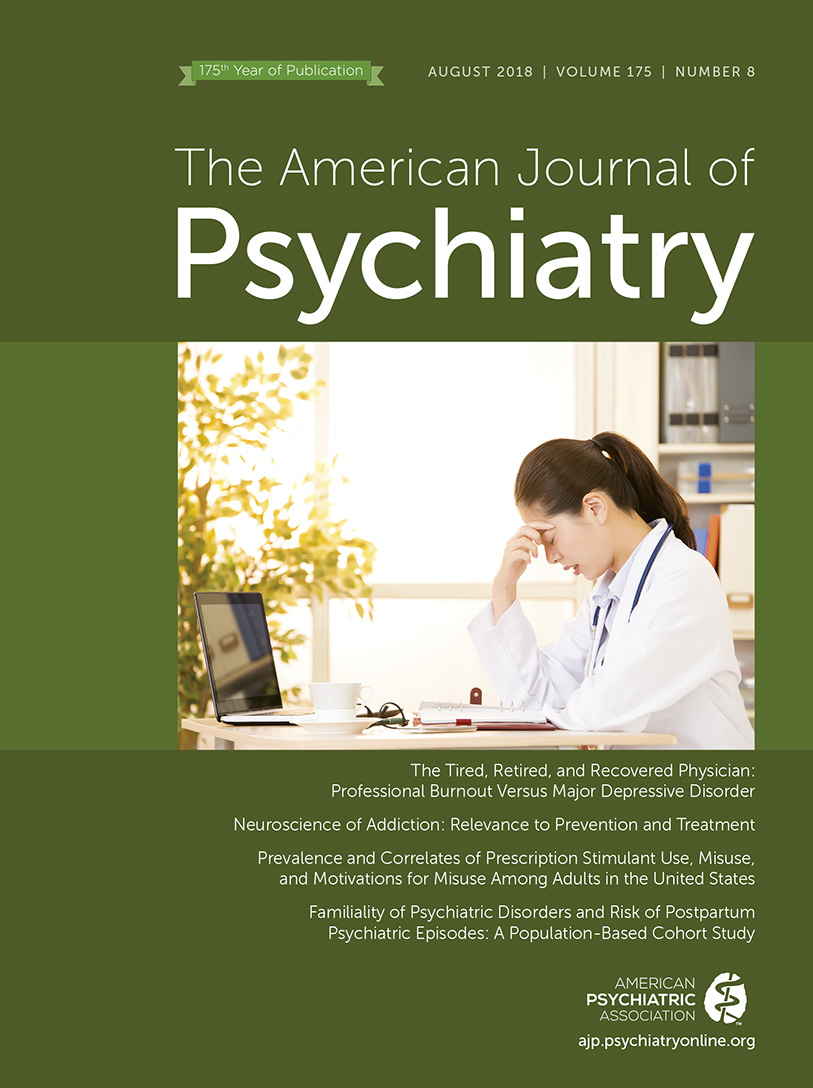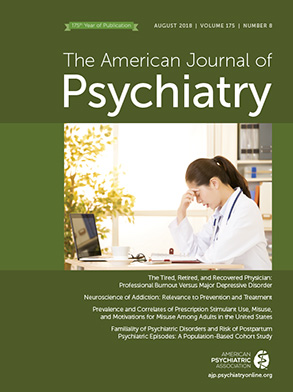For 5 years now, we have been teaching clinicians that lamotrigine is a useful drug for patients with borderline personality disorder, based on evidence from two very small studies (
1,
2). Lamotrigine seemed to us, and perhaps to many psychiatrists, to have a pharmacologic profile that could be useful for this patient population. A study reported in this issue by Crawford et al. (
3) persuasively documents the disappointing failure of this seemingly promising mood stabilizer to be helpful. This trial of lamotrigine for the treatment of borderline personality disorder reinforces three important lessons about the state of the pharmacologic treatment of the disorder—namely, that no medication has been shown to be an adequate primary treatment agent, that borderline personality disorder is distinct from bipolar disorder, and that placebo may be an effective treatment when delivered in the context of good clinical management.
It is impossible for psychiatrists to avoid treating patients with borderline personality disorder. This group constitutes more than one-fifth of all psychiatric inpatients and outpatients (
4,
5) and more than one-tenth of all emergency department visits (
6,
7). Usually patients receive this diagnosis only after they have first received multiple trials with psychoactive medications (
8,
9). Even after the diagnosis is given, medication treatments are typically continued over many more years (
10). This practice has developed despite the fact that no medication has been approved by the U.S. Food and Drug Administration for borderline personality disorder. The U.K. National Institute for Health and Care Excellence has concluded that psychoactive medications should not be used for borderline personality disorder except for the treatment of co-occurring disorders, and then only for the shortest possible time (
11).
The use of mood stabilizers for patients with borderline personality disorder has been encouraged by the concept of the disorder as a bipolar spectrum disorder. It is now known that the actual co-occurrence of borderline personality disorder and bipolar I or II disorder is only about 15%, that the coaggregation of bipolar and borderline personality disorders in families is only modest, and that the two disorders have little effect on each other’s course and only rarely evolve into each other (
12). The brains of individuals with borderline personality have been shown to be decidedly distinct volumetrically, topographically, and in neural circuitry from those of individuals with bipolar disorder (
13,
14). Nonetheless, in clinical practice, patients with borderline personality disorder are commonly misdiagnosed as having bipolar disorder (
15) and frequently receive prescriptions for mood stabilizers, whose use is then sustained over time (
10). In the absence of benefits from these medications, patients with borderline personality disorder receiving them—or any other ineffective medication—may suffer unnecessary side effects, postpone getting more effective treatments, and, even as their despair grows, cling to the seductive message that their future might depend on medication effects. The need for caution is underscored by recognizing lamotrigine’s potential for severe complications, such as Stevens-Johnson syndrome and hemophagocytic lymphohistiocytosis.
Does this mean that psychiatrists should cease prescribing medications for their patients with borderline personality disorder? No. Clinical experience has shown that medications can help build an alliance, can relieve states of distress, and can sometimes be helpful for comorbid disorders. For the 15% of patients with borderline personality disorder who have co-occurring bipolar disorder, psychopharmacologic intervention may be necessary for their mood disorder. The Crawford et al. study underlines the fact that medications should be prescribed with healthy skepticism. Both patients with borderline personality disorder and their clinicians can at times idealize the potential effects of medications. Healthy skepticism is an antidote to this sort of idealization on both sides of the therapeutic relationship. This healthy skepticism is embedded in knowing that over 80% of patients with borderline personality disorder remit, with low rates of relapse, even in the absence of treatments by clinicians trained to treat the disorder (
16,
17). Moreover, we now know that nonintensive therapies can be nearly as effective as more intensive therapies delivered by specialists (
18).
In the Crawford et al. trial, patients in both the placebo and lamotrigine arms showed clinically significant reductions of borderline symptoms, with a large effect size. Given that only one-third of the patients in either arm were adherent, this finding emphasizes both the natural course of remission in borderline personality disorder and the likelihood of a significant placebo effect among patients with the disorder. A meta-analysis of psychopharmacologic trials for borderline personality disorder showed that placebo is associated with moderate effect sizes in this disorder (
19). In this study, we believe that the so-called placebo effect is likely to have been enhanced by having concerned and informed professionals systematically monitoring the course of each patient’s symptoms. Similar conclusions have been made for treatment trials of major depressive disorder (
20). Viewed from this perspective, the Crawford et al. study draws attention to the powerful effects of a focus on borderline personality disorder (
21) and nonspecific supportive care (
22) when provided by nonspecialist professionals.
Until recently, the literature on treating borderline personality disorder emphasized evidence-based psychotherapies such as dialectical behavior therapy, mentalization-based therapy, and transference-focused psychotherapy, which are intensive in both their training and clinical resource time requirements (
23). These options are expensive, do not integrate medication management, and are of sufficiently limited availability that they cannot address the public health needs of this population. Against this backdrop, and consistent with Crawford and colleagues’ results, there is growing evidence that less intensive, more readily learned generalist models of treatment, such as general (or “good enough”) psychiatric management (
24) and structured clinical management (
25), can be as effective for patients with borderline personality disorder as the more specialized approaches. General psychiatric management includes a conservative strategy for managing medications, unapologetically acknowledging the borderline personality disorder diagnosis and that no pharmacologic treatment has proven to be more than adjunctive for the treatment of the disorder.
Crawford et al. also demonstrate that the expense of treatment for their patients with borderline personality disorder is not insignificant when costs for inpatient, community, and other medication care are tallied. The total yearly cost per participant in the study was $17,785 in the lamotrigine arm and $12,340 in the placebo arm. These resources could be applied to a once-weekly generalist model, with a likely overall reduction of costs, assuming that an average weekly 50-minute appointment with a psychiatrist costs $250, which would come to a yearly total of $13,000 at most without medications.
In summary, the Crawford et al. study doesn’t just provide a valuable lesson about the limitations of lamotrigine for patients with borderline personality disorder, it also documents the fact that impressive benefits can come from providing regular visits with a focus on monitoring symptoms. When prescribing medications, psychiatrists should be aware that after making the borderline personality disorder diagnosis, their concerned attention and wise counsel—that is, the psychosocial aspects of good care—are likely to effectively help patients manage their symptoms and vulnerabilities. Well-delivered, good, plain general psychiatric management can go a long way.

